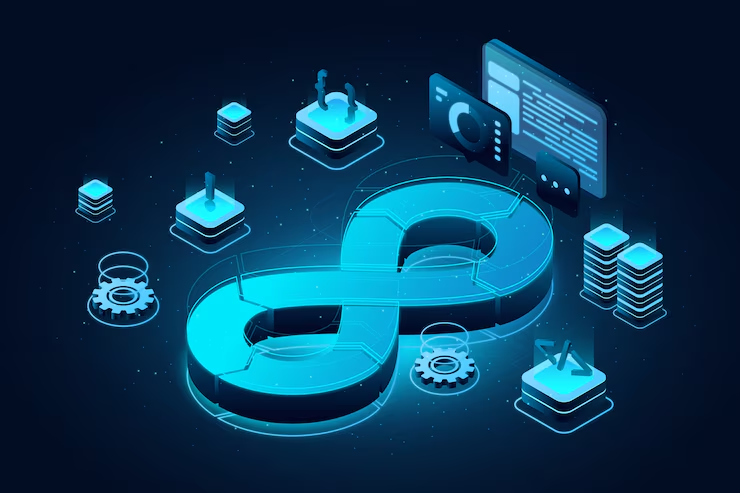LangChain vs. RAG Stack vs. Semantic Kernel
LangChain vs. RAG Stack vs. Semantic Kernel

As businesses rush to integrate GenAI into their products, they often hit a wall trying to figure out the best knowledge retrieval and generation approach. Do they build a custom solution or rely on a framework to speed development? How do they choose the best framework if they go with a framework? Multi Agent AI LangChain and Retrieval-Augmented Generation (RAG) are popular approaches, and there’s a lot of noise around both. In this blog, we’ll cut through the chaos and help you quickly identify which option to use for your project so you can achieve accurate, scalable, and efficient knowledge retrieval and generation without unnecessary complexity. Lamatic’s generative AI tech stack can help you achieve your goals faster by offering a customizable solution based on LangChain, RAG, and the latest advancements in AI. Instead of starting from scratch, you can use our solution to get up and running quickly to focus on what matters most—delivering results for your business and your customers.
What are LangChain and RAG?
LangChain is an open-source framework for developers to build applications around large language models (LLMs). With its modular design, LangChain allows these applications to tap into external data, tools, and services to provide more accurate and up-to-date results.
Key Features of LangChain
Language Model Interactions
LangChain primarily manages how LLMs interact with external data, other models, or systems. This allows developers to create more sophisticated applications than just using a single LLM in isolation.
Chains and Pipelines
LangChain enables the creation of chains of models or actions, where the output of one model is fed into another. For example, you can chain models that retrieve web data, process it using natural language processing, and then summarize it.
Memory & State Management
One of the significant challenges in LLMs is maintaining a conversation’s context. LangChain introduces a system to manage memory across interactions, allowing models to have more consistent conversations and reasoning capabilities.
Tool Integration
LangChain provides built-in integrations with databases, APIs, web services, and other external tools. This allows LLMs to fetch up-to-date data from the web or databases and process it on the fly.
Use Cases for LangChain
Conversational Agents
LangChain can be used to build chatbots that rely on predefined responses and dynamically fetch and synthesize information from multiple sources.
Text Processing Pipelines
For example, retrieving and summarizing scientific papers or legal documents from multiple databases.
Question Answering Systems
LangChain can build QA systems that leverage multiple information sources to answer complex questions.
What is Retrieval-Augmented Generation (RAG)?
Retrieval-Augmented Generation (RAG) is a technique that combines two main AI components: retrieval models and generative models. This architecture is designed to generate answers by retrieving relevant information from a large corpus and combining it with a generative language model to provide an accurate, contextually relevant response.
Key Features of RAG
Retrieval + Generation
The core of RAG lies in using retrieval-based systems to pull relevant data from an extensive knowledge base (e.g., Wikipedia or a custom dataset) and passing that information to a generative model (like GPT-3) to formulate a response.
Contextual Understanding
RAG uses retrieval to ensure that the generative model operates with up-to-date or context-specific information, preventing it from “hallucinating” or providing incorrect answers due to its training data’s limitations.
Modular Design
RAG is modular and can be paired with different retrievers (e.g., dense vector retrievers like DPR or BM25) and generative models (e.g., BERT, GPT). This flexibility makes it adaptable to a variety of tasks.
Real-Time Information
Since RAG retrieves the most relevant information from external sources before generating a response, it is better suited for answering questions related to recent or dynamic events, which a pre-trained generative model might not have seen during training.
Use Cases for RAG
Open-Domain Question Answering
Systems like Google’s search engine or customer service bots can use RAG to generate precise, informative answers by pulling data from a vast knowledge base.
Document Retrieval & Summarization
RAG can retrieve the most relevant parts and coherently summarize them when processing lengthy documents.
Knowledge Management
Companies can use RAG to allow their employees to query large internal databases and retrieve actionable information.
Introduction to Semantic Kernel (aka SK)
Semantic Kernel is an open-source SDK from Microsoft that makes it easy to build AI agents that can interact with a wide range of LLMs as well as call existing application functions. It is available in Python, C#, and Java.
Semantic Kernel revolves around a Kernel that handles events using plugins and functions to complete a task. It also includes a Planner that can automatically decide which plugins and functions to use given a prompt.
Semantic Kernel Pros and Cons
SK is elegant but is not adopted by as many developers as LangChain. Here are some of the most important Semantic Kernel pros and cons:
Semantic Kernel Pros
- .NET support and backed by Microsoft
- Clean prompt implementation
- Ideal for experimentation and production
- SK Plugins are easily transformable into OpenAI plugins
Semantic Kernel Cons
- Requires frequent adaptation in an evolving space
- Limited resources and documentation
- Learning curve due to integration differences from typical frameworks
- Limited availability of plugins and extensions
LangChain vs Semantic Kernel
Semantic Kernel and LangChain both enable the integration of natural language processing easily, however, they do it differently. On the one hand, if you’re looking for a lot of prebuilt tools, great community support, many plugins, a high level of abstraction, and lots of tutorials online you may want to consider LangChain.
On the other hand, an obvious use case for Semantic Kernel is if you’re using the .NET Framework. SK comes with Python, Java, and C# support which integrates beautifully with your existing .NET codebase. It also looks cleaner and more organized than LangChain.



